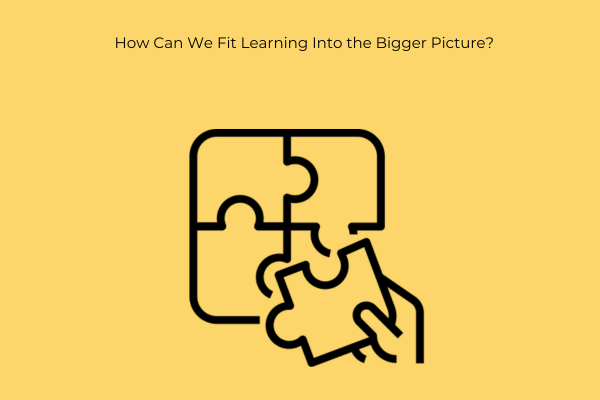How Can We Fit Learning Into the Bigger Picture? 🖼️
Actionable takeaways with an example of gardening 🪴
When I learn a new skill, either to build better learning products or for leisure, I always ask myself - How will this skill help me in the next 5 years? This works beautifully with professional skills and to my surprise, also with skills that I pick up as a hobby. For example, learning chess helps me with my focus, thinking a few steps ahead and navigating tough situations calmly.
Connecting the current learning experience to the big picture is a valuable and important aspect of the learning process.
In this article, we explore the meaning of ‘making learning whole’, how it impacts our current learning experiences and the larger goal, and actionable takeaways for learners looking to apply this approach in their next learning experience.
The concept is explored in depth in the book "Making Learning Whole" by David Perkins. In this book, Perkins argues that by connecting current learning experiences to the bigger picture, learners can develop a more integrated and holistic understanding of the topic they are studying. This approach can help learners engage more deeply, retain knowledge better, and apply what they have learned more effectively.
So, what does it mean to "make learning whole"? According to Perkins, this involves seeing the connections between different concepts and ideas, and understanding how they fit together to create a larger whole. This approach is in contrast to the traditional approach to education, which often focuses on teaching discrete pieces of information in isolation from one another.
One example of how this approach can be applied in practice is in the teaching of mathematics. Traditionally, mathematics has been taught as a series of isolated concepts and formulas to be memorized and applied. However, by making connections between different mathematical concepts and understanding how they fit together, learners can develop a deeper understanding of the subject and see how it relates to the world around them.
For example, instead of learning the meaning of profit and loss with formulas, learn it within an immersive example of a shopkeeper navigating the demands and supply of goods.
How do we put the theoretical concepts of making learning whole into actionable takeaways? Here are a few ideas with a common example of gardening:
1. Look for connections
When studying a new concept, try to look for connections between it and other concepts you have learned in the past. This can help you see how the new concept fits into the bigger picture and develop a more integrated understanding of the subject.
Let's say you are a novice gardener and you are learning about soil pH levels and how they affect plant growth. By looking for connections, you might start to think about how the concept of pH is similar to acidity and alkalinity, which you learned about in a previous chemistry class. You might also think about how the pH of soil affects nutrient availability and uptake, which you learned about in a previous biology class.
2. Use analogies
Analogies can be a powerful tool for making connections between different concepts. Try to find analogies that help you understand how the new concept is similar to or different from concepts you already know.
Using analogies, you might compare soil compaction to traffic congestion in a city. Just like how traffic congestion slows down the movement of vehicles and makes it difficult for people to get to their destinations, soil compaction restricts the movement of air, water, and nutrients through the soil, making it difficult for plant roots to access what they need to grow.
3. Ask questions
When learning something new, ask questions that help you understand how it fits into the bigger picture. For example, you might ask, "How does this concept relate to the larger topic we are studying?" or "What other concepts are related to this one?"
For example, you are learning about the importance of pollinators for plant growth. When applying the strategy of asking questions, you might start to ask questions like:
How do pollinators contribute to the growth and health of plants?
What are some common pollinators in my region, and how can I attract them to my garden?
4. Apply what you have learned
Finally, try to apply what you have learned in real-world situations. This can help you see the practical applications of the concepts you have studied and develop a deeper understanding of how they fit into the bigger picture.
For instance, if you learned about the concept of composting in gardening, you could start collecting organic waste and create your compost to use in your garden. As you use the compost and observe its effects on your plants, you will gain a better understanding of the role of organic matter in soil health and plant growth, and how it fits into the larger picture of sustainable gardening practices.
How do you fit your learning experiences into the bigger picture today? I’d love to hear your suggestions.
Unlearning Thought
Fitting learning experiences into the bigger picture might look like finding puzzle pieces or sowing a red color button to an blue sweater. Both add value.


